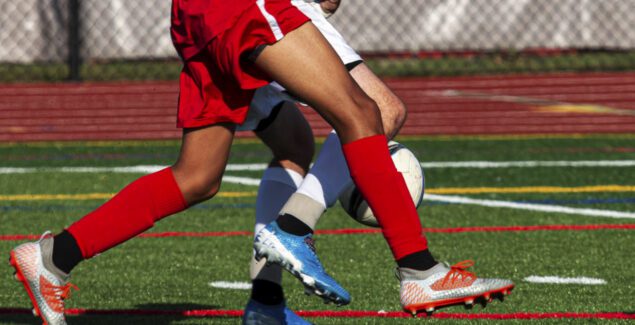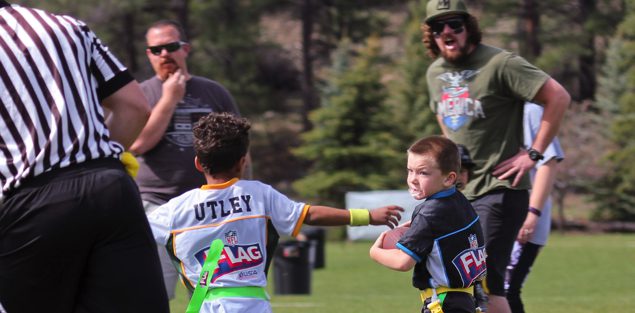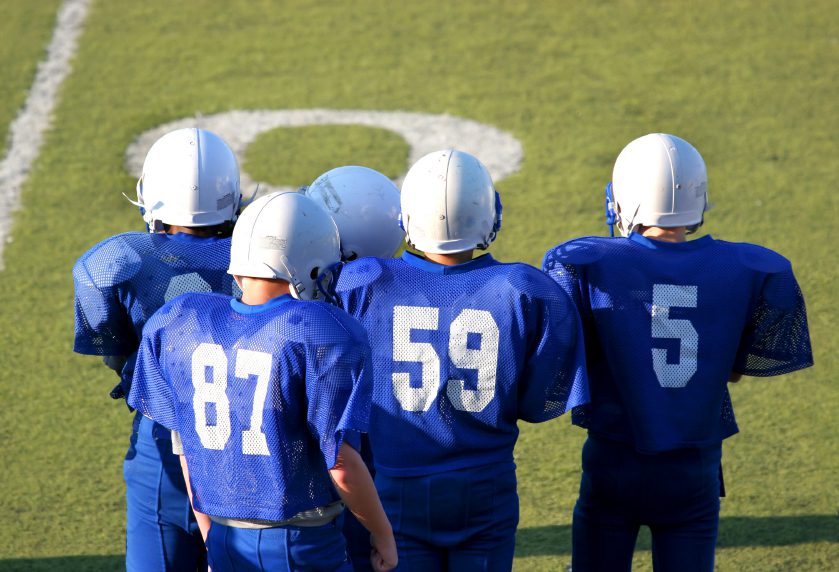How to Support Youth Athletes When a Sports Injury Derails Their Season

Posted in: Parenting Concerns, Teenagers, Young Adults
Topics: Healthy Living, Hot Topics
Agony. Fear. Uncertainty. A loss of what could have been…
These are just a few psychological hallmarks of an injured athlete’s experience. The physical pain of injury is amplified by emotional pain and looming questions:
“How bad is it?”
“How long until I recover?”
“Will I lose my standing on the team?”
“Will all my hard work go down the drain?”
Whether your athlete has big dreams in sport or simply enjoys being active with friends, injury can be a major life disruption with plenty of challenges along the way.
How can we help youth athletes cope with emotional and physical pain during recovery? How can we help rehabilitation go as smoothly as possible? What kind of support is best? Fortunately, researchers and clinicians have some answers to these questions.
Tips for Parents, Coaches, and Caregivers
1. Reduce pain by providing positive emotional experiences. Physical pain is only one of many challenges after sports injury (emotional anguish can be even more debilitating). Still, overcoming pain is essential to progress through rehab. Multiple studies have shown that pain-related emotions influence pain perception. In other words, pain increases when we 1) feel negative emotions (e.g., anger, anxiety, sadness), 2) are hopeless (i.e., when we want our pain to go away but expect that it won’t), and 3) perceive that our pain is out of our control. On the flip side, research suggests that inducing a positive mood through music, pleasant images, or humor can reduce pain perception. With mounting evidence questioning the distinction between physical and emotional pain, the International Association for the Study of Pain recently revised its definition of pain (for the first time since 1979) as “an unpleasant sensory and emotional experience…”
Managing pain has the obvious benefit of alleviating distress and discomfort. It can also help youth athletes engage in potentially painful rehab exercises – the core ingredients of recovery. So go to the movies, play games, watch comedy, listen to or play music. Engage with the world and shift attention away from pain, which also reduces pain perception. Don’t put life on pause after an injury. Help your athlete explore new ways of experiencing joy, or rediscover old ones they may have neglected while immersed in their sport.
2. Use rehab role models. In 1977, renowned psychologist Albert Bandura proposed his Social Learning Theory, the core tenet of which is now taken for granted – much of our behavior is shaped by our environment, through observation and imitation. How can you harness social learning to help your injured athlete? Researchers from New Zealand recruited injured participants awaiting anterior cruciate ligament (ACL) reconstruction. They showed them videos of actors modeling effective post-operative rehab behaviors, such as climbing stairs, cycling, and regaining range of motion. Compared to those who did not see the videos, these participants experienced lower pre-operative expectations of pain, greater self-efficacy, and better objective knee functioning after surgery. While this study focused on adults, social learning theory itself was derived from numerous studies with children. Young or old, we are constantly absorbing and internalizing social and environmental cues, whether we realize it or not.
Youth athletes have inspiration and positive rehab role models at their fingertips. Numerous YouTube videos show elite athletes attacking their rehab with a vengeance and coming back stronger than ever. Parents, coaches, and trainers can also be positive rehab role models. Do you model anxious/avoidant responses to pain? Do you convey a sense of trust in the rehabilitation process and trust in the injured body part, once healed? Do you amplify your athlete’s excitement about returning to sport or focus only on hypothetical future risks?
3. Foster autonomy, competence, and a sense of belonging. Self-determination theory, one of the most cited psychological theories of the past several decades, states that motivation and achievement are not possible without first satisfying our basic psychological needs: autonomy (making our own decisions, acting in line with personal values), competence (performing tasks successfully and adapting to environmental demands), and belonging (feeling connected, valued, and accepted). If youth athletes feel pressured to perform (i.e., lack autonomy) or feel incompetent, regardless of injury, they are significantly more vulnerable to sport dropout.
Foster autonomy by involving athletes in the rehab process as shared decision-makers. Youth athletes may be inclined to “do what the adults say” and avoid disappointing parents, coaches, and doctors who have invested their time and energy. Imposing rigid timelines and expectations on your athlete can turn rehab into another performance. Young people already have unprecedented performance pressures – in their sport, in the classroom, with friends, on social media, and beyond. Have ongoing conversations with your athlete about their thoughts, feelings, and goals for rehab and return to sport. Listen actively and let them lead. Your athlete will return stronger, happier, and more motivated when they choose a path that’s true to them.
Goal setting is key for fostering competence, but not all goals are created equal. The science of goal setting offers insight on the qualities of highly effective goals. Well-formulated goals increase the likelihood of achievement. In addition to the classic SMART Goal framework, rehab goals should be:
- Not just focused on the outcome (e.g., get healthy before tryouts) but also the process (“what should I do every day/week to get there?”)
- Stated in positive terms (what you want to accomplish) rather than negative (what you want to avoid)
- Recorded, monitored, and adjusted as needed. Goal flexibility, based on higher-order goals or values, is crucial
- Supported and reinforced (check in with your athlete, provide praise, and problem-solve)
Collaboratively set rehab goals with your athlete in consultation with their medical team. Early in rehab, goals should be small, numerous, and easily achievable to “stack wins.” Goals can become more challenging as rehab progresses.
A sense of belonging is often discussed after sports injury, and it can’t be emphasized enough. Just because your athlete is surrounded by other people (e.g., attending practice) doesn’t mean they are receiving social support or that they find this support effective. Understand the different types of social support and ask your athlete which ones are most important to them (preferred support may change as rehab progresses). Coaches, how can you creatively involve your injured athletes and show them that they still matter? Medical providers, consider how unhealthy responses to pain can make your athletes withdraw from social activities and lose their sense of belonging (“What if I’m in too much pain? Maybe it’s not worth it…”). Parents, are your kids hesitant to socialize in groups because of their crutches or walking boot? Like exercising, most of us feel better after socializing but we are skilled at talking ourselves out of it. Is your athlete talking themselves out of connecting with friends and family during rehab?
4. Use mental skills to boost mood and increase motivation. A 2020 paper reviewed all research on psychological interventions for athletes following sports injuries. Results showed that strategies such as relaxation, positive self-talk/imagery, goal-setting, and processing emotions through writing facilitated positive mood change, pain management, and exercise/rehabilitation adherence. These skills are not only helpful after a sports injury; they are foundational mental tools for improving sport performance. Once your athlete gets the hang of calming their body with diaphragmatic breathing and using cue words to fire target muscle groups during rehab, they can carry these skills over into their return to sport – a time when mental skills are crucial for reducing anxiety, hesitation, and hypervigilance. Your athlete may have success practicing these skills on their own, with your guidance, or with professional help from a sport psychologist.
5. Remember, “hurt” doesn’t always mean “harm.” Once athletes progress through physical therapy and begin sport-specific drills, increased pain is inevitable. Athletes practice and repeat movements they have not executed in weeks or months, potentially including the very movement that got them injured. For many athletes, that familiar twinge in their knee or feeling of instability is enough to trigger a spiral of fear and doubt. The oft-given advice to “listen to your body” is sometimes important, but we must listen with a critical ear. Athletes may favor an injured body part during rehab and avoid pain-provoking movements due to fear of re-injury, which can limit the functioning of the injured limb, interfere with successful return to sport and, ironically, increase risk for re-injury.
“No pain, no gain” isn’t only a favorite phrase of Dwayne “The Rock” Johnson, it applies to injury rehab (Jane Fonda popularized this phrase, which can apparently be traced back to a 17th-century English poet). There is no way (outside of pharmacological intervention) to strengthen, stretch, and mobilize an injured body part without pain. “Hurt” might have initially meant “harm,” but outside of acute injury, pain is a poor indicator of damage. For example, some interesting research shows that patient-reported knee pain has almost no association with the presence or absence of a meniscal tear in that knee.
6. Sport involves risk. If returning to play is the goal, you and your athlete must understand and accept this risk. Yes, they could get injured again. Is returning to sport still worth it? These tough conversations can help you and your athlete understand what is really important. Sometimes, especially after severe and repetitive injuries, returning to sport is not what’s best. Let this be a collaborative decision with your athlete and the rest of their support system. Remember, support their autonomy and help them connect their ultimate decision to their deeper values.

 Share
Share Tweet
Tweet





